On Thursday, March 24th, the New York Film Academy’s Screenwriting Department, in cooperation with Final Draft, hosted the third, and final, in its second annual series of “Life In” panels. Arranged for NYFA’s Final Draft Fellowship (a 12 week Writing Fellowship for the finalists in Final Draft’s Big Break Contest), this panel focused on “Life in Transmedia” and saw the panelists explore working in franchises, transmedia and individual mediums like comics, web-series and games.
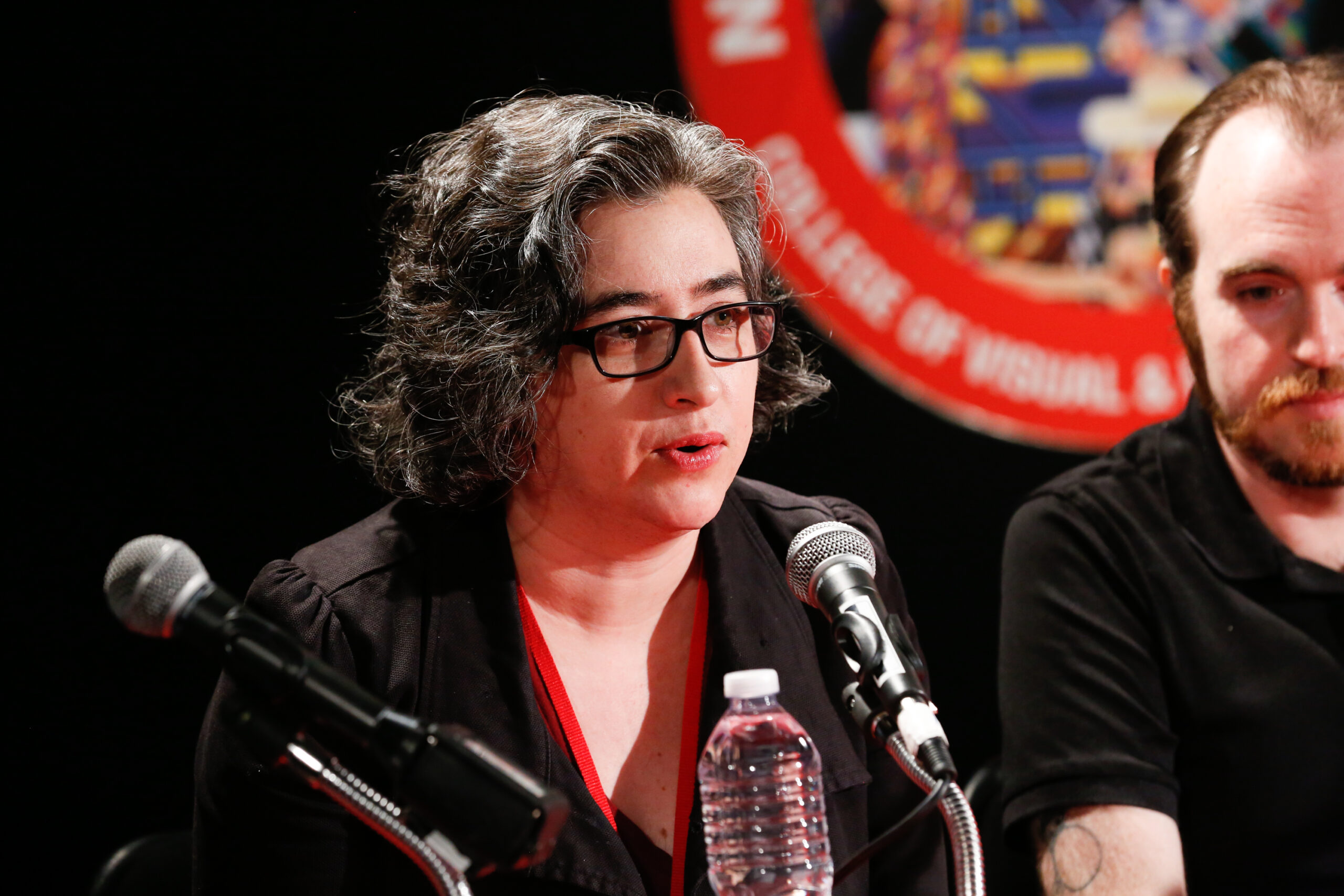
The Transmedia panelists (many of whom teach at NYFA) included:
Nunzio DeFilippis & Christina Weir, writing team in comics (NEW X-MEN, BAD MEDICINE, FRENEMY OF THE STATE), games (Unititled Jet Li videogame), and TV (ARLISS, KIM POSSIBLE)
Josh Eiserike, comic writer & artist (MAD MAGAZINE, ANYONE BUT VIRGINIA, ANNA AND PAT)
Margaret Dunlap, writer of webseries (THE LIZZIE BENNETT DIARIES, WELCOME TO SANDITON, EMMA APPROVED) and television (THE MIDDLEMAN, EUREKA)
Emmett Furey, writer/producer of webseries (THE NEW ADVENTURES OF PETER AND WENDY, FUREY OF SOLACE)
Scott Rogers, writer/producer of video games (LEVEL UP! THE GUIDE TO GREAT VIDEO GAME DESIGN, GOD OF WAR), comics (BEDBUG: SINGLE FATHER SUPERHERO)
Adam Finer, NYFA’s Associate Chair of the Screenwriting Department, moderated and provided advice and insight. He said, “We tell stories. It’s something inherent in human nature. You’re here because storytelling matters.”
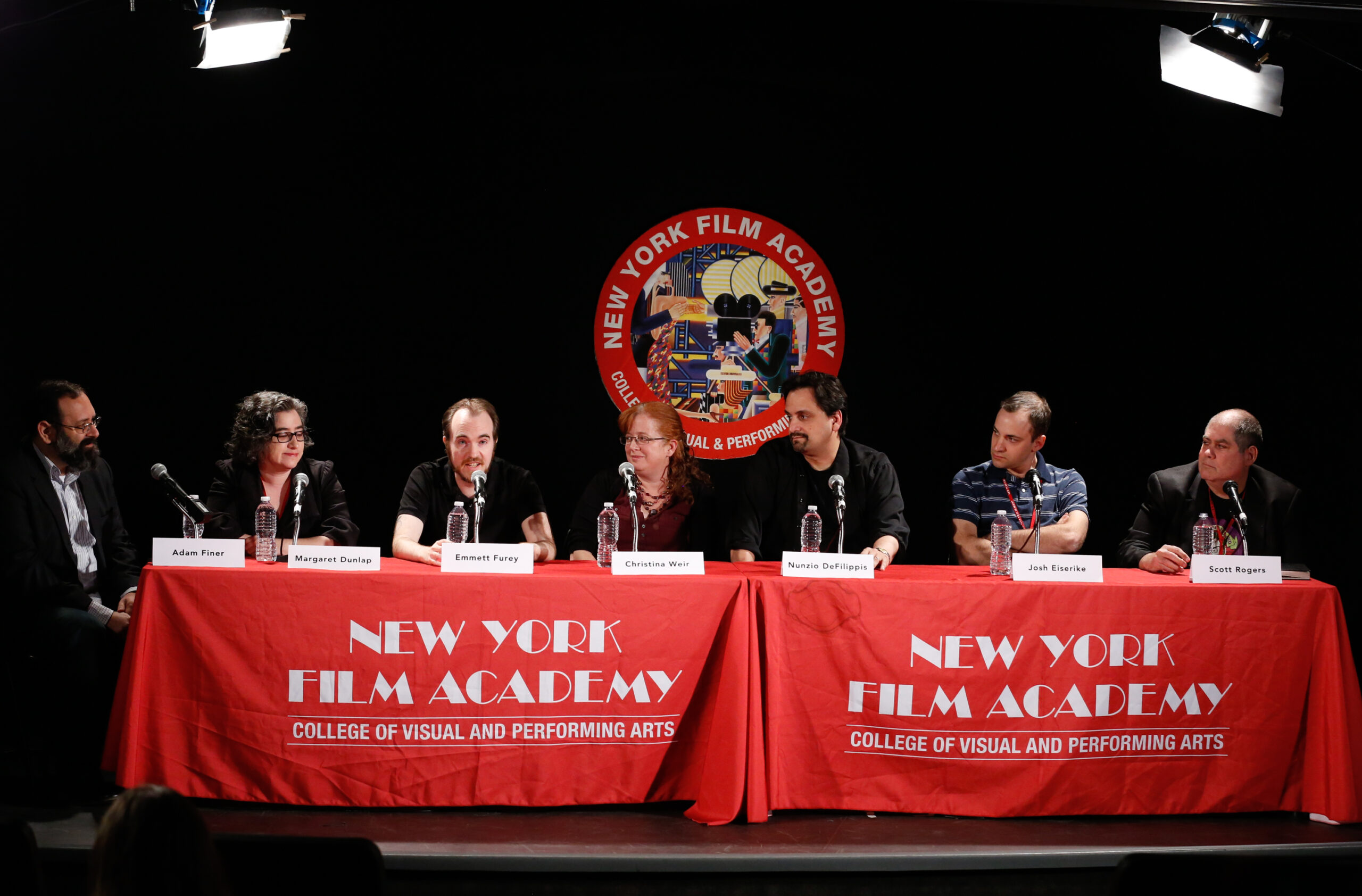
Adam started the discussion with the big question: What is Transmedia? Margaret Dunlap joked that with six panelists you would get about seven different answers, but Nunzio DeFilippis’ answer garnered general agreement. Nunzio explained that transmedia is story told across multiple media, where, ideally, each new media format expands the world, characters, and story. He said that transmedia is a way to, “Think beyond film and television.”
The conversation moved to how to get started working in transmedia. Scott Rogers discussed the available technology and software in today’s world that can help a person create their own material – software to render video games, technology for drawing and animating, phones and cameras to film. Scott said, “It’s completely doable. There’s going to be a big amount of luck, and skill, and talent, but it’s doable.” Emmett Furey added, “There’s nothing to stop any of you. You just gotta do it.”
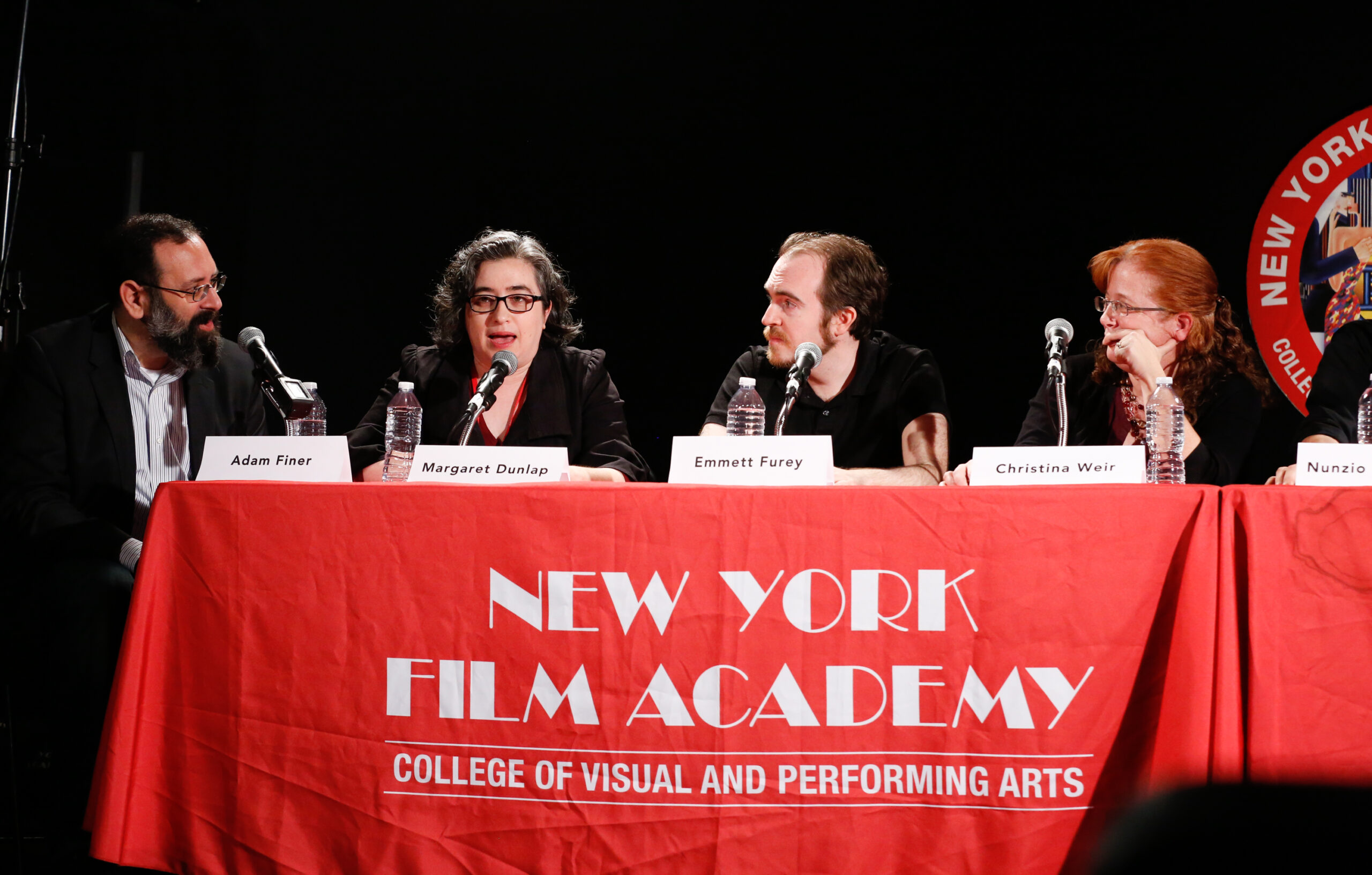
One way to get involved in creating your own content that the panelists discussed was to borrow from pre-existing franchises. Scott Rogers said, “If you love Star Wars, create your own Star Wars.” Take what you love from a franchise – the world, characters, relationships – and create your own, unique, version. Josh Eiserike added, “Tap into what you really love about the world and then create your own version.” Nunzio DeFilippis, who has written for X-Men and Superman, offered a counterpoint, though, saying “if you create your own team, you have to wait to see if they have the cultural impact of the X-Men.” He spoke about the thrill of working in a franchise that has an existing fanbase.
The panelists also explored getting started with content based off property in the public domain. Margaret Dunlap, an Emmy Award winner of The Lizzie Bennet Diaries and Welcome to Sanditon, said of writing new media content for property in the public domain, “Part of the appeal is that it gives people the hook in. This is familiar ground. It’s easier to take on something new if there’s something familiar at the same time.”
This segued into how creating your own content in new forms of media can lead to other, more traditional, forms of media. The comic writers, Nunzio DeFilippis, Christina Weir, and Josh Eiserike, all agreed that one should never set out to write a comic, or any other form of new media, with the intent of having it turned into a film or television series. They did agree that if you create compelling content it can be easier to turn it into something else, but that should never be the original intent. Nunzio insisted, “If you can’t be with the one you love, love the one you’re with. You have to love the form you’re writing in.”
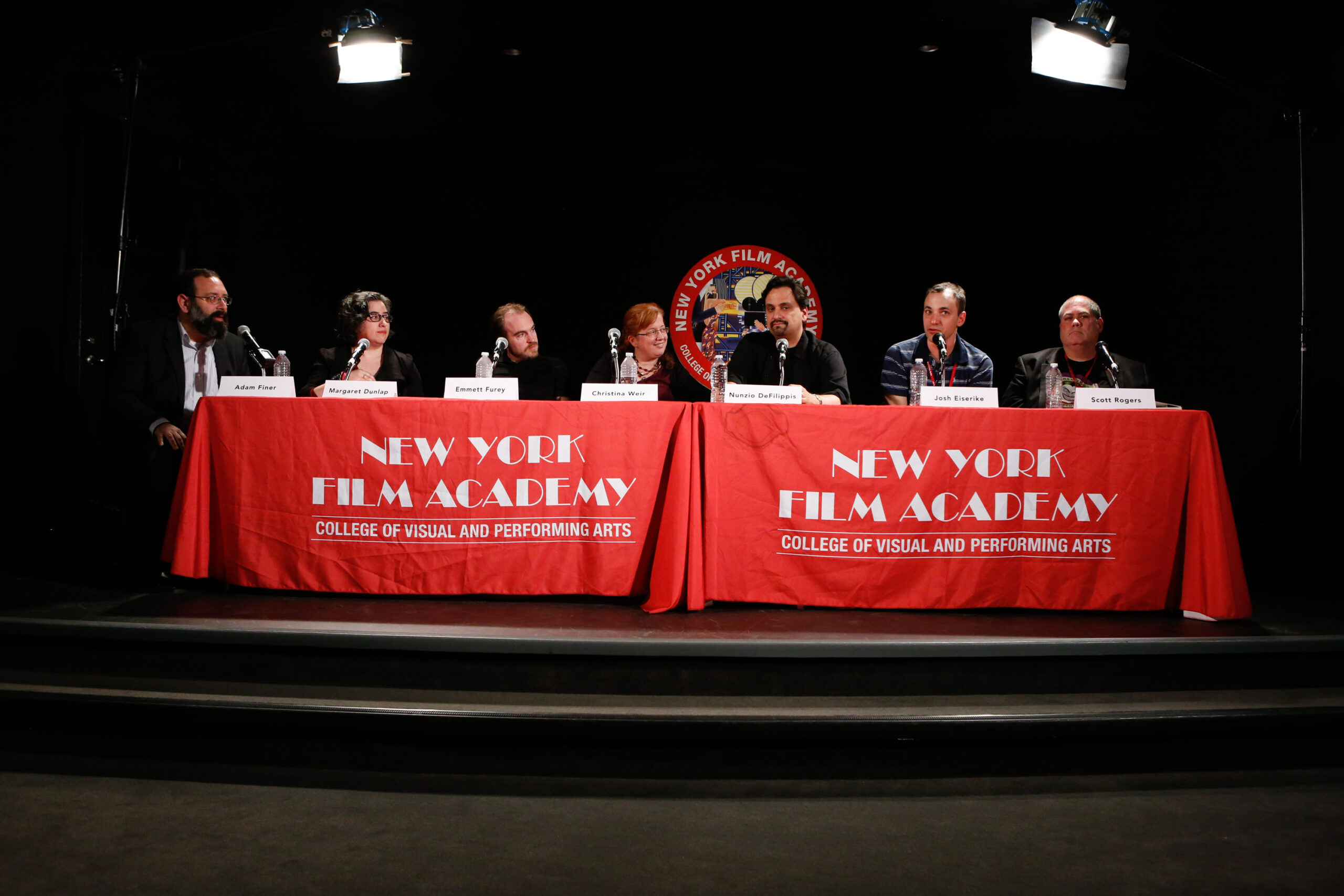
Adam Finer then asked the panelists to discuss audience engagement within the transmedia world. Emmett Furey told an amusing anecdote one of his The New Adventures of Peter and Wendy characters interacting with a fan, role-playing a fairy character, to the point of other fans “shipping” (seeing two characters in a relationship) them. At the end of this story Emmett said, “We facilitate fanfiction by making it fanfact.” In terms of the web and social media, there is no lag between the content being delivered and fans responding to it. Fans want to be, and will be, involved. Margaret Dunlap said, “When you bring your story out into the real world, storytelling gets messy, and that’s okay. Stuff is going to happen that you hadn’t anticipated and you have to embrace it.”
At the end of the discussion the audience (made up of Final Draft fellows, NYFA students, and alumni) was invited to ask questions, which ranged from virtual reality games, alternate reality games, and traditional media breaking into the web space.
One student asked about limitations new media formats can have on storytelling. Nunzio DeFilippis brought up that while film and television can control the pacing of the viewer, comics can’t – or they handle pacing differently. A reader can stay on a page for hours or seconds, they read at their own pace. However, surprises can be controlled as long as they don’t come on an even page where the surprise would be seen on the opposite page. In terms of limitations on story, however, Christina Weir said, “You are not limited in comics. If you want to tell a story in space with exploding rockets you can. The artists can draw that as easily as panelists sitting behind a table.” When it comes to games, Scott Rogers, talked about the biggest limitation being that of the user. If a player can’t get past a certain level, or isn’t interested, they’ll never unlock the full story.
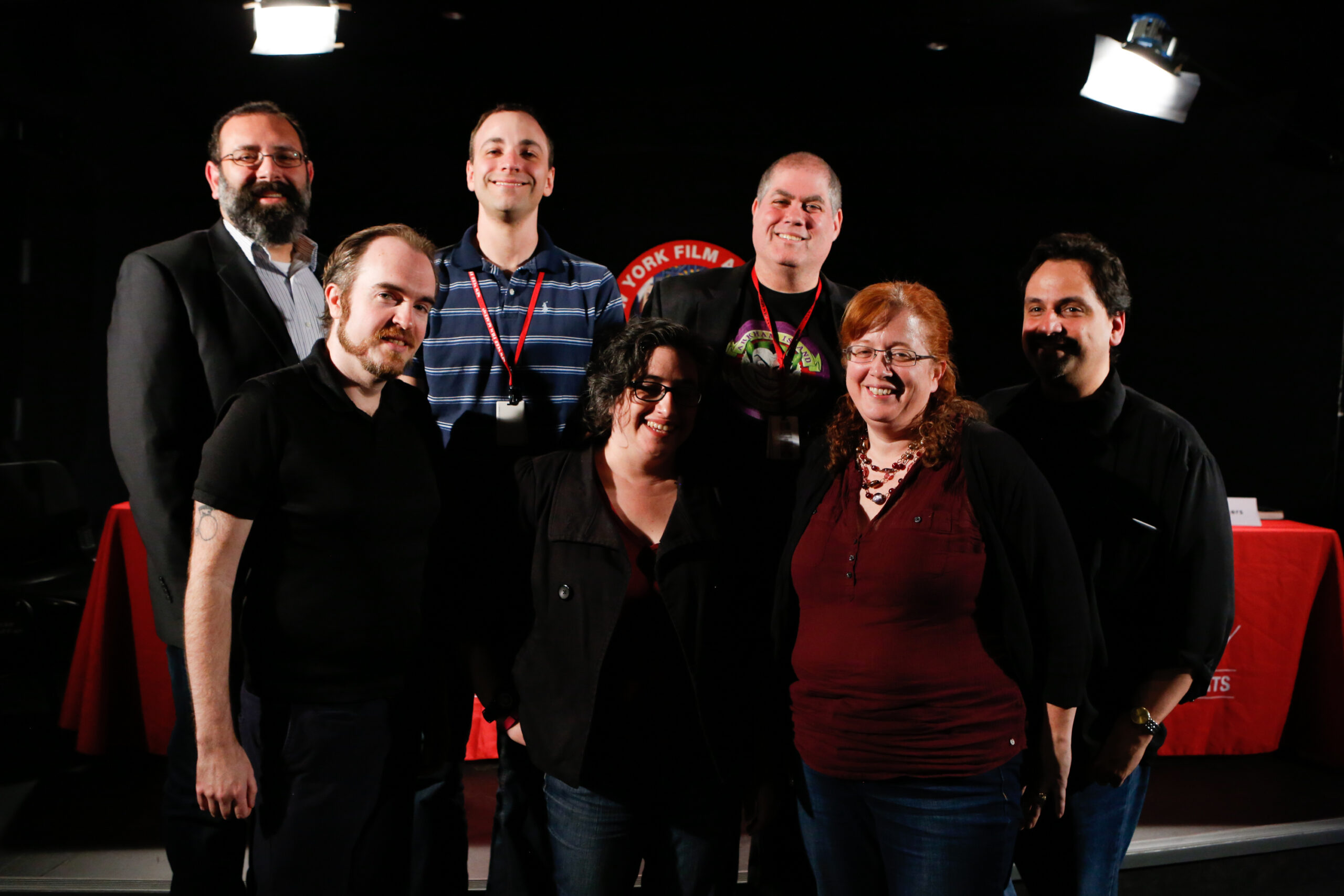
One of the Final Draft Fellows asked about finding an audience once your content has been created. Scott Rogers discussed finding other creators with similar interests and commenting on their pages/blogs/content, then, once your material is ready to go out, asking if they will help promote your work. Margaret Dunlap added, “Patience really is the long game. Start small and if you nurture it, it can really snowball.” Josh Eiserike chimed in with, “It’s not just about building a fan base and cultivating fans. It’s also about cultivating your peers. Use your network.” He talked about searching for others with similar interests, promoting their work, and then asking if they would do the same. Nunzio DeFilippis encouraged the audience to show authenticity towards your peers. To be genuinely interested in what they have to offer and be kind, then people will be more willing to help you.
The ultimate bit of wisdom given to the attendees was to always be creating and making things. To collaborate with others and to make projects with your friends. And to not let the fear of wanting to create something similar to something else stop you from creating.